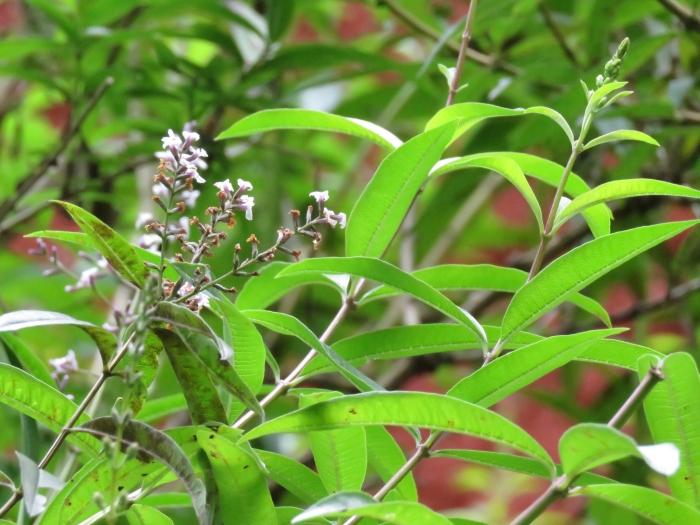Lemon Verbena
(Aloysia citrodora)
Lemon Verbena (Aloysia citrodora)
/
/

© Juan Carlos Caicedo Hernández
CC BY 4.0
Image By:
© Juan Carlos Caicedo Hernández
Recorded By:
Copyright:
CC BY 4.0
Copyright Notice:
Photo by: © Juan Carlos Caicedo Hernández | License Type: CC BY 4.0 | License URL: http://creativecommons.org/licenses/by/4.0/ | Uploader: juan_carlos_caicedo_hdz | Publisher: iNaturalist |



















Estimated Native Range
Summary
Aloysia citrodora, commonly known as Lemon Verbena, is a perennial shrub native to the warm temperate and subtropical regions of South America, particularly Argentina, Chile, and Peru. It typically grows to a height of 7-10 feet with a similar spread, and is characterized by its glossy, pointed leaves that emit a strong lemon scent when bruised. The plant produces clusters of tiny, pale purple or white flowers that bloom in late spring or early summer, which are less showy compared to its foliage but add a delicate touch to the plant’s overall appearance.
Lemon Verbena is highly valued for its intense lemon fragrance and is widely used in culinary applications, such as flavoring fish, poultry dishes, and beverages. It is also popular in the creation of potpourri and herbal teas. In cultivation, it thrives in full sun to part shade, in well-drained soil, and requires regular watering. While it is evergreen in tropical climates, it may lose its leaves when temperatures drop below 32°F. Pruning in spring is recommended to maintain a bushy form and encourage new growth. Lemon Verbena can be susceptible to whitefly and spider mites, especially when grown indoors or in dry conditions. It is not known to be invasive but can become leggy without proper pruning.CC BY-SA 4.0
Lemon Verbena is highly valued for its intense lemon fragrance and is widely used in culinary applications, such as flavoring fish, poultry dishes, and beverages. It is also popular in the creation of potpourri and herbal teas. In cultivation, it thrives in full sun to part shade, in well-drained soil, and requires regular watering. While it is evergreen in tropical climates, it may lose its leaves when temperatures drop below 32°F. Pruning in spring is recommended to maintain a bushy form and encourage new growth. Lemon Verbena can be susceptible to whitefly and spider mites, especially when grown indoors or in dry conditions. It is not known to be invasive but can become leggy without proper pruning.CC BY-SA 4.0
Plant Description
- Plant Type: Shrub
- Height: 6-8.25 feet
- Width: 6-8.25 feet
- Growth Rate: Moderate
- Flower Color: Purple, White
- Flowering Season: Spring, Summer
- Leaf Retention: Deciduous
Growth Requirements
- Sun: Full Sun
- Water: Medium
- Drainage: Fast, Medium
Common Uses
Bee Garden, Edible*Disclaimer: Easyscape's listed plant edibility is for informational use. Always verify the safety and proper identification of any plant before consumption., Fragrant, Hedges, Low Maintenance, Potted Plant, Street Planting
Natural Habitat
Native to the warm temperate and subtropical regions of South America, particularly Argentina, Chile, and Peru
Other Names
Common Names: Lemon Verbena
Scientific Names: , Aloysia citrodora, Aloysia citridora, Aloysia sleumeri, Aloysia triphylla, Aloysia triphylla f. serrulata, Cordia microcephala, Lippia citriodora, Lippia citrodora, Lippia triphylla
GBIF Accepted Name: